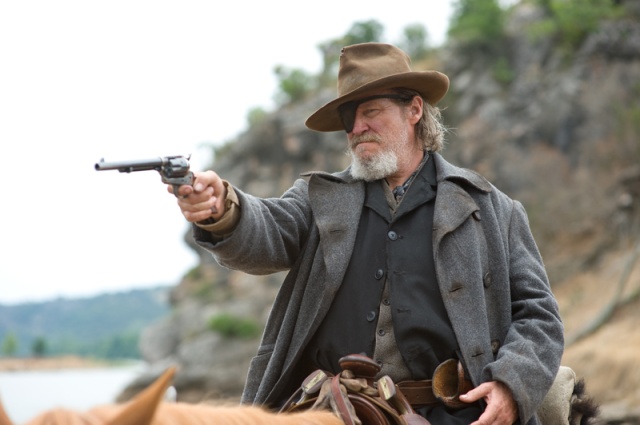True Grit
Posted on December 22, 2010 at 8:05 am
In a remake of the John Wayne classic that is truer to the Charles Portis book, the Coen brothers have made their most sincere film yet, a western as spare and yet majestic as its unspoiled landscapes. Like all great westerns, it is a meditation about the forces that shaped the American spirit, the determination, resilience, passion for justice, and most of all the mingled pragmatism and idealism.
Joel and Ethan Coen’s previous films have had a preciousness and remove from their often-grotesque characters, a frequent feeling of ironic air quotes in their picaresque speech patterns and fantastic, even mythic plot twists. This time, they give us a sincere and appreciative portrayal of a steely 14-year-old heroine (remarkable newcomer Hailee Steinfeld) who wants to find and kill the man who murdered her father. 
Steinfeld plays Mattie Ross, a girl whose tight braids demonstrate her no-nonsense determination. She crisply negotiates the disposition of her father’s body with the undertaker and then demonstrates her mastery of horse-trading by selling back to the local broker the horses her father had come to town to buy, and, with a little extra leverage from a threatened lawsuit, getting some cash and a pony out of the deal. And so when she sets her mind to hiring the top tracker in town to find Tom Chaney (Josh Brolin), the man who killed her father, you know she is going to be successful.
That tracker is Rooster Cogburn (Jeff Bridges), a man who may too old and infirm (he has an eye patch and a drinking problem) and possibly be too quick to kill (he can’t or won’t recall under oath the details of some of the men he’s killed) to do the job. It turns out someone else is looking for Chaney, a Texas Ranger named LeBoeuf (Matt Damon). The two men have no interest in working together and even less in bringing along a 14-year-old girl, but their mutual determination and stubbornness has them soon on the trail together.
The first version, directed by Henry Hathaway, was a bit of a miss-match and a more than a bit meta, with Wayne playing and playing off of his screen persona, pop singer Glen Campbell as LeBoeuf, and Kim Darby, then in her 20’s, playing Mattie. In this film, the actors are far better matched to each other and their roles. Bridges, whose most memorable role may be in the Coens’ “The Big Lebowski,” fully commits to the character, not caricature, of Rooster Cogburn. The asperity and resolve of the young girl are well matched by the man who may be undisciplined and ungovernable but who is also in his own terms honorable. It is these two, both who must continue after dire physical sacrifice, who represent the forging of a social construct that will support frontier society.
The landscape, spare, magnificent, and challenging, is stunningly photographed by the Coen brothers favorite cinematographer, Roger Deakins. Production designer Jess Gonchor makes every shot look like a painting somewhere between Thomas Eakins and Grant Wood. Each shot is meticulously framed to add a transcendent dignity and seriousness of purpose to the story.


